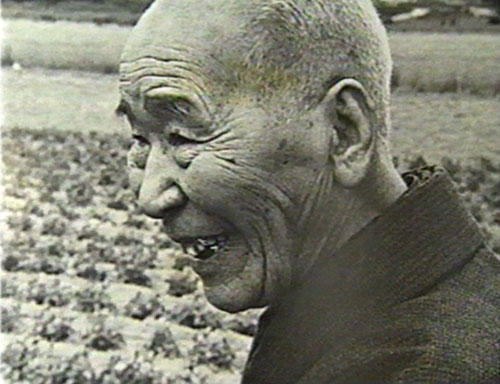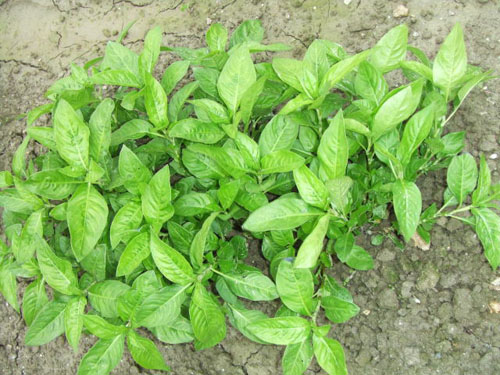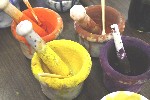Close Call
By John Marshall
The following is a summary transcription of the content of a Japanese NHK television video series on Indigo, produced in 1992. This program describes the efforts of Heisuke Satoh (November 1, 1885-January 24, 1976) to preserve Japanese indigo during World War II. John has a link to the video on his Web site, at the top of http://www.johnmarshall.to/closeCall.html.
Indigo production has gone through a number of crises in its long history.
Most recently was during WWII in Japan. With the war effort in full swing, harsh restrictions were placed on all energy expended in non-war related activities. Since food production was given maximum preference, farmers were required to cease production of all non food-oriented crops. This included indigo.

The Satoh household, which had been producing indigo for generations in Tokushima, was required to comply and dutifully dug up all their fields, at least as far as the officials could determine.
Japanese indigo, tadeai, is an annual. Since it does not reseed on its own, if the cycle is ever entirely broken, you run the risk of loosing the species. Heisuke Satoh took his seeds and went far into the mountains to plant his crop, hidden from the public eye—just enough plants to keep the seed stock fresh and viable. It was a terrible time for the Satoh family. Trusted friends and family would cover for his absence, all the while fearing detection.
Heisuke had early on decided that indigo production was to be his life's blood, and that no matter what the cost, he must do all in his power to save the plant and the traditions for future generations. This sounds like a heroic tale in terms of today, but at the time he would have been branded a traitor with dire consequences.
However, once the war ended, the Satoh family was able to bring the indigo quickly back into production, whereas most other natural dyers required years to bring their plants back to the point of being able to harvest them.
Heisuke had a grandson, Akihito, who is now one of the leading natural indigo producers in Japan. Tune in next issue for more about the Satoh family and Japanese indigo production.

 Turkey Red Journal
Turkey Red Journal
